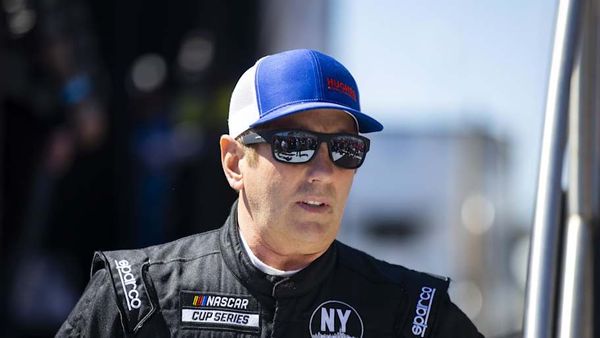
Drought has wiped billions of dollars from South Australia's economy and farmers are "talking to bank managers" as they grapple with the impact of record low rainfall and the worst harvest in 15 years.
The estimated grain harvest for 2024/25 is 5.3 million tonnes, which is 42 per cent below the five-year average and the state's worst harvest in 15 years, Grain Producers SA chief executive Brad Perry said.
"Given the number of farmers who didn't get a crop up at all, it's quite remarkable that we're able to grow crops like that on the worst or second worst rainfall in our history," he said.
A particularly bad season with no rain and wide-scale frost events had "really hit them hard".
"They'll be currently talking to their bank managers and trying to work a way through to next season, and those who didn't get a crop up will be searching for seed and support," Mr Perry said.

Drought is now such a common phenomenon that, in line with the National Drought Agreement, governments no longer make formal drought declarations and assistance is ongoing.
The SA Government announced in November that it was investing $18 million to support farmers, including $5.5 million funding for the Future Drought Fund, which includes ongoing programs to help farmers with business resilience planning, climate tools and building more resilient farming practices.
The package also assisted with the distribution of 3600 bales of donated hay to communities across SA in late January, with further charity convoys planned.
But Mr Perry said half the $18 million was existing funds, and the package's $5 million for on-farm drought infrastructure grants was already almost exhausted.
"So we've actually written to (Primary Industries Minister Clare Scriven) and sought another $7 million for that program," he said.
The harvest had wiped off $2 billion from the state's economy compared to last year's "average" crop, he said, and "the entire state is going to feel that".
In the Barossa Valley, grape grower Marco Cirillo said the drought had meant that the crop at Cirillo Estate was harvested in January for only the second time in 50 years.
"It's definitely bleak at the moment - there's a lot of people that are struggling mentally and financially, and both of those things usually coincide," he said.
"There are global pressures, wine consumption on the decline globally, then you have the financial pressures of inflation and then you chuck in frost and drought at the same time - it's bloody tough," he said.

Brett Bartel, the Director of Recovery at the Department of Primary Industries and Regions SA, said most of the state's agricultural region was experiencing drought conditions.
"The fact that we've been able to harvest 5.3 million tonnes this year is a miracle," he said
He credited this result with investment in programs like the Future Drought Fund and said that research and development of crop varieties and how to grow crops in very low rainfall had paid dividends.
The livestock industry was experiencing unique hardship, because it was coming off a very low cash flow as a result of low livestock prices in 2023, Mr Bartel said.
"So they're doing it tough now, and also the livestock industry doesn't bounce back as quickly as the grain industry, it takes time to build up livestock again."
Ms Scriven had staged a "positive" agribusiness finance forum with banks to alert them to the severity and impact of the drought on producers, and the banks had outlined how they managed clients dealing with hardship, Mr Bartel said.
SA has just experienced its driest January since 2013, and the state's area-averaged rainfall of 3.6mm was 83 per cent below the 1961-1990 average.
In the 11 months after February 2024 - the state's growing season - most agricultural regions.experienced severe or serious rainfall deficiencies.
A grower on the Eyre Peninsula, who farms cereal crops and sheep, said there had been enough rain last year to "convince us to put crops in and to put all the products and inputs into a good crop".
But after virtually no rain in August and September, their crops withered.
"We've destocked some of our livestock late last year, we're carting water because we have no dams or pipes into the property," she said.
"Feed's low for livestock, because we had a poor year, there's not much out in the paddocks, and we're considering quitting more livestock."
The farmer was working on their finances to fund their next planting "and now we're waiting for the gods to be kind to us this year".

The SA government plans to build a $330 million desalination plant near Port Lincoln, because the Eyre Peninsula is facing extreme water shortages and restrictions and needs an alternative to underground aquifers that could run dry by 2026.
It's not just SA's agricultural areas grappling with low rainfall.
Last year, was Adelaide's driest since 2006, prompting production at the Adelaide Desalination Plant to be increased until mid-2025, to up to 300 million litres of water per day.
Water inflows to Adelaide's reservoirs are the lowest in around 40 years, with combined reservoir levels at 44 per cent – the lowest level for more than 20 years.
The state's second largest reservoir, South Para, is at just 36 per cent capacity.
The desal plant - which came online in 2012 and is a legacy of the Millennium Drought - will ensure a consistent water supply in Adelaide without the need for water restrictions.
"If we didn't have this plant, I would be having sleepless nights," Infrastructure Minister Nick Champion admitted in January.

Commenting on the causes of the drought, SA climate researcher Darren Ray said that findings released this week by renowned climate scientist James Hansen affirmed that a key driver of global warming is the reduction of sulfate aerosol pollution over northern hemisphere oceans.
That change was due to stricter shipping fuel regulations that had cut the level of sulphur pollution in the air, allowing more heat to reach ocean surfaces.
"I think that's what's driving the other major contributors to the drought conditions at the moment," Mr Ray said.
"The strong warming in the northern hemisphere looks like it shifted the tropics further north ... and that's contributing to decreased rainfall over the southern parts of the country."
Whether that would continue was "an excellent question that I'm trying to get my head around", he said.
The shift of weather systems northward could potentially support a wetter winter because cold fronts are also further north, he said.







